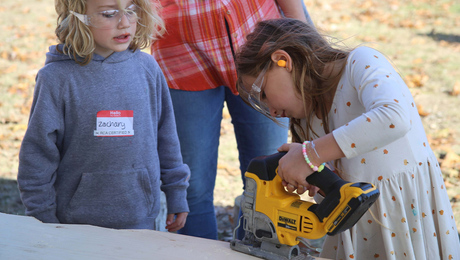Podcast Episode 131 – Dealing With Wet Decking
Concrete piers that fall below grade, pooling water on a deck, and cathedral ceiling installation

Justin, Patrick, and Matt discuss solutions to concrete piers that fall below grade, how to diagnose and deal with pooling water on a deck, and troubleshooting a tongue-and-groove cathedral ceiling installation.
Question 1, from Adam: Guys- I’m building a no-step entry house, which has front and back attached porches. The treated porch columns are anchored to a concrete footing wall which sits lower than desired. The porches will be finished with pavers, but to achieve a no-step entry, the porches would first have to be backfilled.

The problem with this is that this backfill will be burying the columns by about 6-9″.
I’m worried about backfilling around these critical structural members in an active termite area. Do you have suggestions on keeping these columns safe from moisture and termites for years to come?
I’m thinking my best route would be to “tar” the bottom perimeter of the columns, and pack around them with larger 3/4″ rock, pea gravel, or sewer chips. What do you think?
 Question 2, from Dustin: Hey guys, I built a Trex deck late last fall for a customer and they are concerned it is holding water on the surface too long after a rain. The photos below were taken over a 2.5 hour period with about 20 minutes between each photo. It was 75 degrees, sunny, and barely a breeze the day I took the photos.
Question 2, from Dustin: Hey guys, I built a Trex deck late last fall for a customer and they are concerned it is holding water on the surface too long after a rain. The photos below were taken over a 2.5 hour period with about 20 minutes between each photo. It was 75 degrees, sunny, and barely a breeze the day I took the photos.
More info:
The deck was constructed with treated lumber for framing and installed with Trex hidden fasteners. I feel that the drying time for the deck isn’t a concern and the variation in drying time is due to shadows and differences in the lumber as it dries. Would you guys agree? If not what did I do wrong and how do I address it now?
Question 3, from Brad:
My 18×24 cabin has seen its fair share of “carpenters” through a few changes and additions to the framing and interior. As of this email, I have rebuilt one gable end wall, fixed some framing in the existing wall, a few new rafters, new sheathing, and framed in a new bathroom and loft. The interior of the cabin will be cathedral ceiling with 12’ to the peak.
The structure of the walls are built with 2×4’s and the roof rafters are 2×6’s. With keeping budget, and use in mind, not much is being added to the thickness of the wall or roof framing. Instead, to make up for the lack of space for adequate insulation, Rockwool will be installed and 1.25” poly iso will be added to the entire interior. We are going this route due to the choice of leaving the siding alone for now and addressing that later down the road.
Addressing the lack of insulation in the ceiling, and considering its design of a cathedral ceiling, should venting from soffit to ridge be installed? Should I build a cold roof? Any other type of material in the rafter bays? If I add to the thickness of the rafters, I loose head room in the loft, which isn’t ideal. And as I’m writing this, I should have considered adding thickness to the top of the rafters while the roof was off. This can easily spiral out of control.
This episode of the podcast is brought to you by Benjamin Obdyke.
Benjamin Obdyke would like to use the special occasion of their 150th anniversary to thank the nuisances that builders and homeowners despise. Their premium products protect from those pesky things like rain, snow, humidity and the neighbor’s sprinkler system. Take HydroGap, a drainable housewrap that eliminates moisture from your wall assembly. Or Cedar Breather, an underlayment for wood roofing that allows continuous airflow behind shingles or shakes. One man’s headache is another man’s successful business. To build better with Benjamin Obdyke, visit benjaminobdyke.com.
We hope you will take advantage of a great offer for our podcast listeners: A special 20% off discounted rate to subscribe to the Fine Homebuilding print magazine. That link goes to finehomebuilding.com/podoffer.
The show is driven by our listeners, so please subscribe and rate us on iTunes or Google Play, and if you have any questions you would like us to dig into for a future show, shoot an email our way: [email protected]. Also, be sure to follow Justin Fink and Fine Homebuilding on Instagram — and “like” the magazine on Facebook. Note that you can watch the show above, or on YouTube at the Fine Homebuilding YouTube Channel.
The Fine Homebuilding Podcast embodies Fine Homebuilding magazine’s commitment to the preservation of craftsmanship and the advancement of home performance in residential construction. The show is an informal but vigorous conversation about the techniques and principles that allow listeners to master their design and building challenges.
Links for this episode:
- All FHB podcast show notes: FineHomebuilding.com/podcast.
- #KeepCraftAlive tee-shirts support scholarships for building trades students. So go order some shirts at KeepCraftAlive.org.
- The direct link to the online store is here.






















View Comments
Handling wooden decks is not an easy job. The woods in fractures and furniture are prone to get termite damage. Wooden things should be handled properly or else they get a termite infested. One can contact Termite Control Granite Bay, CA https://www.rosevillecapestcontrol.com/termite-control-removal/ for getting the proper inspection and getting rid of such nasty termites.